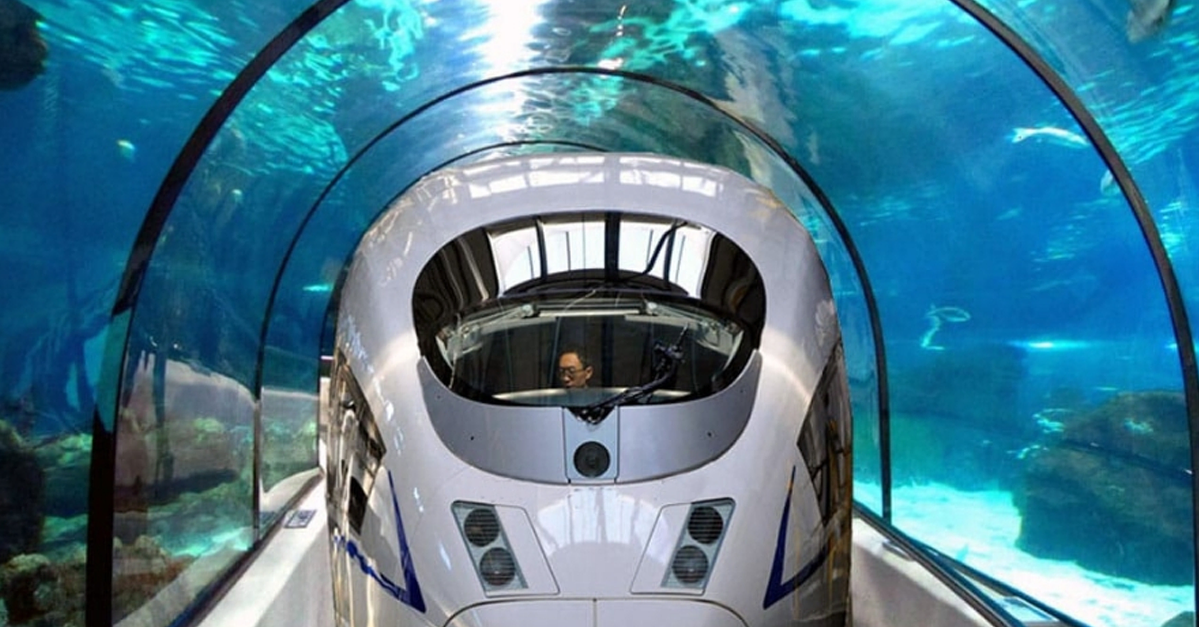Horse Racing
Belmont Park is getting a huge $455 million makeover. Here’s what the new racetrack will look like. | amNewYork

New York horse racing fans finally have an idea of what the new-and-improved Belmont Park will look like once it reopens from a major transformation in 2026.
The Governor’s office and the New York Racing Association (NYRA) released on Monday renderings of a reimagined Belmont Park racetrack, including a state-of-the-art grandstand that can accommodate both the large crowds drawn to the Belmont Stakes, and thoroughbred racing almost 11 months out of the year.
Once completed, the grandstand will also be fully winterized, and the renovated racing surfaces will also include the addition of a 1 mile all-weather synthetic racetrack within the turf courses. This will permit the new Belmont Park to operate year-round, and for NYRA to consolidate its downstate racing operations — leading to the eventual closure and redevelopment of Aqueduct Racetrack in Queens.
The governor’s office noted that the 2024 enacted budget, which included $455 million for the Belmont project, requires Aqueduct’s closure in order for some 110 acres of state-owned land at the site to be redeveloped for other uses.
For now, Aqueduct is hosting almost all of NYRA’s racing over the next two years while Belmont is closed for reconstruction — with upstate Saratoga Race Course hosting the next two runnings of the Belmont Stakes at brief boutique meets in June, and its standard 40-day summer racing seasons between mid-July and Labor Day.
“The redevelopment of Belmont Park is a critical investment in one of New York’s most historic sporting venues,” Governor Kathy Hochul said Monday. “The new facility will support year-round racing, thousands of new jobs for Long Islanders and provide an enhanced experience for customers attending the iconic Belmont Stakes for generations to come.”
The project is expected to generate 3,700 construction jobs in the near term, and the state believes the new Belmont will help generate $155 million in annual economic output, as well as $10 million in new state and local tax revenue each year.
“The transformation of Belmont Park will secure the future of thoroughbred racing in New York state, create thousands of jobs and drive tourism to Long Island and the region for decades to come,” said NYRA President and CEO David O’Rourke. “NYRA is committed to building a world-class destination that will set the global standard for a racing facility, and we thank Governor Hochul for the opportunity to completely re-imagine Belmont.”
Approved through legislative efforts last year, the $450 million Belmont rebuild is now underway; NYRA says it is the first new ground-up racetrack to be built in the United States in nearly 40 years, a period in which horse racing’s popularity has declined, and other racetracks around America have shuttered.
Horse racing, however, continues to remain popular in New York. The annual Saratoga meet draws in nearly a million fans and more than $800 million in handle with some of the best thoroughbred racing in America all year, and the Belmont Stakes (the third leg of racing’s Triple Crown) has been known to draw crowds of up to 90,000 for races in which a Triple Crown sweep is on the line.
Project details
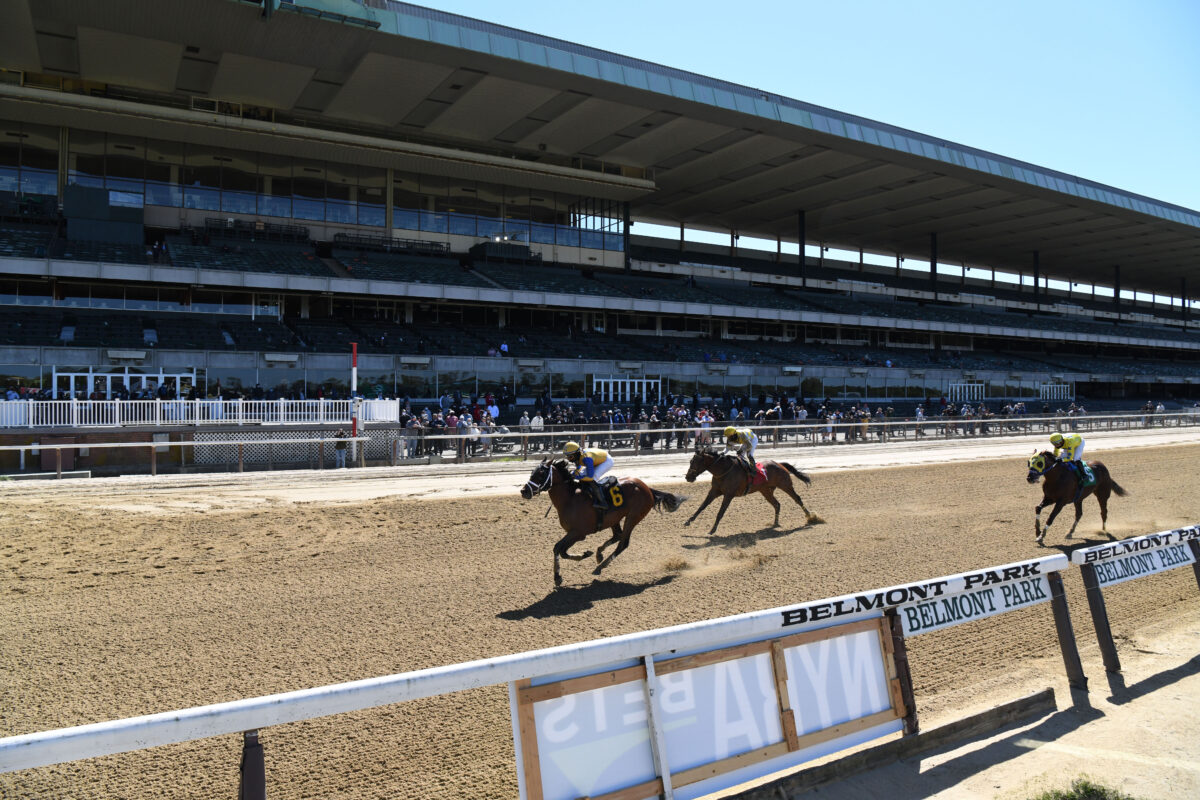
The current Belmont Park grandstand, a massive 1.5 million sq. ft. concrete-and-brick structure built in the 1960s that saw five Triple Crown winners race past it in its era (from Secretariat in 1973 to Justify in 2018), will be torn down beginning this month, and the new Belmont grandstand will rise in its place starting after demolition ends, in about July.
Designed by architectural firm Populous, in conjunction with NYRA, the new Belmont Park grandstand will be smaller (250,000 square feet) but taller than its predecessor — allowing NYRA to maintain a 50,000 seating capacity thanks to changes to “the layout of seats, suites and standing spaces.” The new grandstand will feature general concessions as well as local businesses.
Moreover, a new tunnel connecting the grandstand with the 45-acre infield will allow tens of thousands of additional fans to congregate inside the racing oval on major racing days such as the Belmont Stakes Racing Festival.
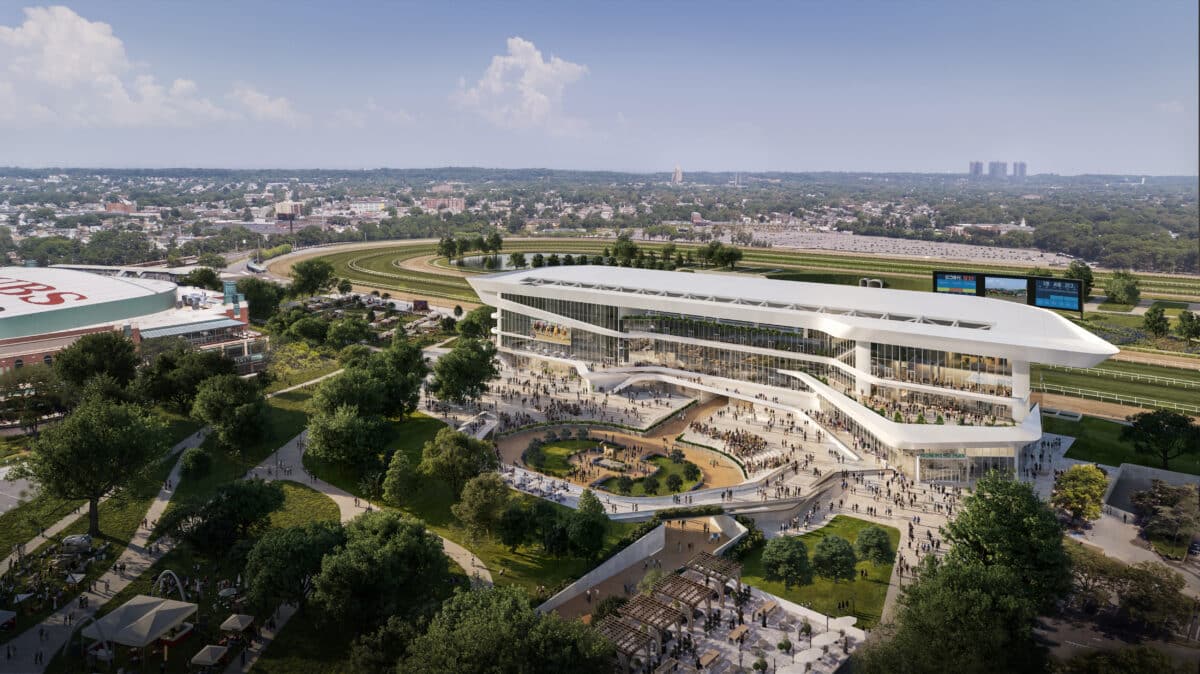
Other parts of the Belmont infield will also be converted to community space that can be accessed year-round by local residents. NYRA says the rebuild also enables it to expand the backstretch and barn area with three new dormitories scheduled to open by 2026.
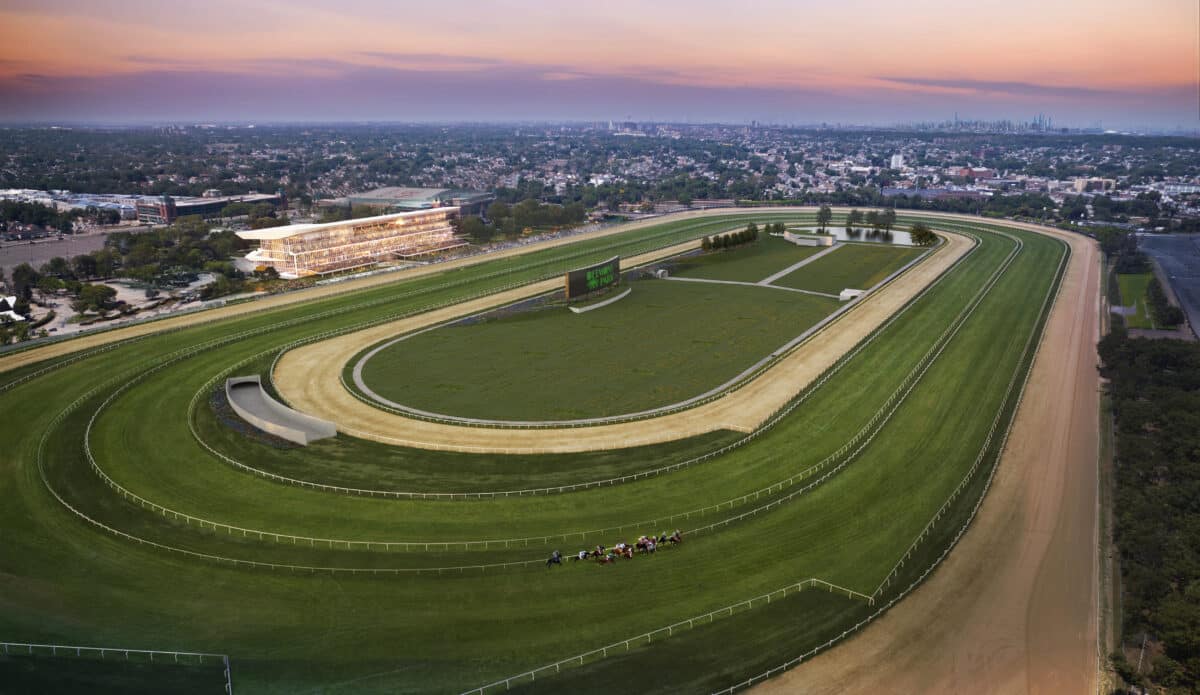
The 1 1/2 mile main track colloquially called “Big Sandy” will remain with little changes along with the two vast inner turf courses within — all three tracks are the largest of their kind in the U.S. The synthetic course built within the turf courses will enable NYRA to run in all weather year-round, and to relocate turf races whenever inclement weather makes the courses too wet to compete.
The synthetic course also figures to boost track safety, a major topic in recent years when on-track horse fatalities have caused some to question the sport’s existence. Tapeta, which will be installed on Belmont’s synthetic course, is considered one of the safest surfaces in use, providing ample cushion to help horses absorb the shock of running, and reducing the risk of catastrophic injury.
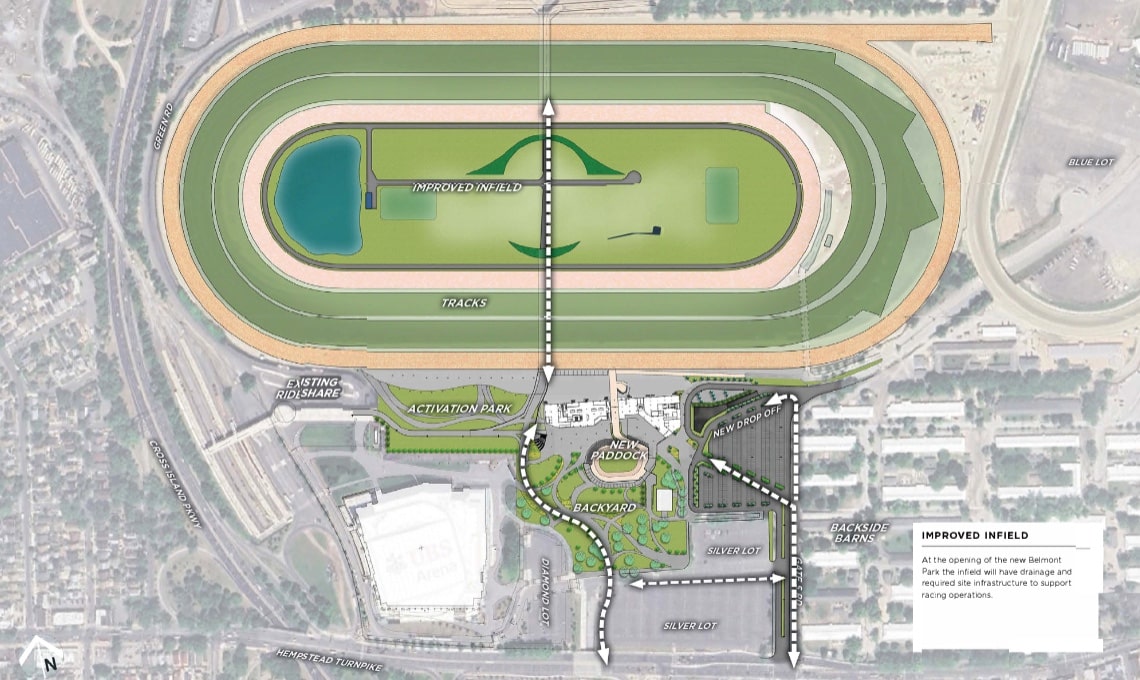
Opening timetable
As for when the new Belmont grandstand will officially open, NYRA projects that will happen in September 2026. The organization, however, says it has developed a plan to run the Belmont Stakes at Belmont Park that June, three months before the new building’s scheduled opening.
NYRA is also throwing its hat in the ring at hosting the 2026 Breeders’ Cup World Championships, the lucrative race meet held every fall at tracks in North America. Belmont last hosted the Breeders’ Cup in 2005, with the organizers opting to host the event at other facilities across America such as Churchill Downs in Kentucky, and Santa Anita Park and Del Mar Race Course in California.
Bringing the Breeders’ Cup back to Belmont Park, a report published in 2022 indicated, would give the New York economy a $100 million boost. NYRA received a letter of support from the Breeders’ Cup for the new Belmont Park project, in which the organizers committed to bringing the championships back to Belmont once the rebuild is complete.
Marc Holliday, chair of NYRA’s board of directors, hopes the new Belmont Park takes a place “on the global stage among iconic venues” of thoroughbred racing around the world, such as Ascot in England, Longchamp in France, and The Curragh in Ireland.
“It is an honor to design and develop a venue that will appeal to racing enthusiasts and attract a new generation of fans,” Holliday said. “Thanks to the leadership of Governor Hochul, the new Belmont Park will be immediately recognizable as a New York landmark and symbol of the enduring appeal of top-quality thoroughbred racing.”









